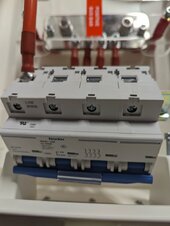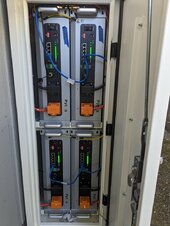Ampster
Renewable Energy Hobbyist
I decided to start a new thread about my Pytes battery install. My previous thread about my SolArk install can be found here:

 diysolarforum.com
diysolarforum.com
As I reported on that thread, I temporarily installed 3 of the Pytes V5 batteries and set up communication. The first issue was that the batteries did not support my loads during the 4-9 period I had previously set up. I did not completely reboot but kept the inverter on when I turned on the battery switch. The SolArk took the essential loads panel offline briefly and went through what I thought was a boot up process. Eventually the Pytes batteries charged from solar and then to full overnight from the grid, Later today I will try the full reboot sequence and see if the batteries will support the loads during the 4-9 period I had previously programmed.
In addition the batteries do not show up on part of the web interface but shows up on Solar Assistant and the screen on the SolArk.

My SolArk 12k install with Enphase Micros
I had previously reported on my Outback Skybox install with a 7kW Enphase micro GT system.. I recently evaluated my needs and the easiest way for me to add incremental capacity is with micros on my west facing roof pitches. For a couple of reasons I decided to upgrade to a SolArk 12k which in...
As I reported on that thread, I temporarily installed 3 of the Pytes V5 batteries and set up communication. The first issue was that the batteries did not support my loads during the 4-9 period I had previously set up. I did not completely reboot but kept the inverter on when I turned on the battery switch. The SolArk took the essential loads panel offline briefly and went through what I thought was a boot up process. Eventually the Pytes batteries charged from solar and then to full overnight from the grid, Later today I will try the full reboot sequence and see if the batteries will support the loads during the 4-9 period I had previously programmed.
In addition the batteries do not show up on part of the web interface but shows up on Solar Assistant and the screen on the SolArk.
Last edited:




